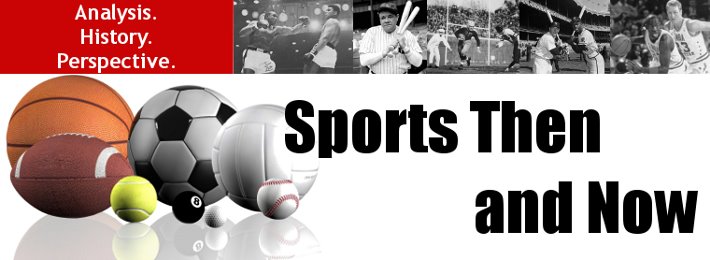

Just when it looked like all the nostalgia talk at the 2009 NCAA Division I Men’s Basketball Final Four was going to be about 1985, the Michigan State Spartans threw a wrench in the plan and ensured that the 30th anniversary of their first championship would be properly remembered.
By trouncing top seeded Louisville 64-52, the Spartans denied the Big East’s bid at taking three teams to the Final Four for the first time since 1985. With the Final Four being played in Detroit, Michigan State is looking to be the first team since UCLA in 1975 to win the national championship in their home state*.
Of course, the return of Villanova to the Final Four for the first time since winning the title in 1985 ensures that there will still be lots of talk about that unbelievable upset.
While I personally believe that North Carolina State upsetting Houston in the 1983 finals was a little more improbable, it is hard to dispute that Rollie Massimino and his 1985 Wildcats played one of the best games in tournament history to defeat defending champion Georgetown.
Having twice faced the Hoyas during the regular season and lost close games both times (52-50 in overtime in Philadelphia and 57-50 in Washington), Villanova wasn’t intimidated by the defending NCAA Champions and their lineup of stars, which was led by senior All-American Patrick Ewing.
In the era before the shot clock and three-point line, the Wildcats knew that the key for them was to break the pressing defense of the Hoyas and then to make the most of every possession by waiting for the opportunity to take good shots.
What ensued was a 40-minute clinic in which Villanova executed that game plan to perfection.
Villanova connected on an amazing 72.2 percent (13 of 18) of their field goal attempts in the first half and led 29-28 at intermission. The hot shooting made for a great half of basketball, but surely they would cool off in the second half and Georgetown would pull away for the expected victory.
Not only did the Wildcats not cool off in the second half, they actually improved. Villanova connected on nine of 10 field goal attempts in the final 20 minutes to finish the game at 78.6 percent, easily the best showing ever for an NCAA final. And it wasn’t as if Georgetown was throwing up bricks. They hit on a very respectable 54.7 percent of their field goal attempts.
A 6-0 run late in the second half gave Georgetown a 54-53 lead with just under five minutes remaining. The Hoyas tried to run off some clock, but a steal by Dwayne McClain and a basket by Harold Jensen gave Villanova a lead and they would never again trail. The final score was Villanova 66, Georgetown 64.
The 1979 NCAA Championship victory for Michigan State was not quite as surprising, but it did prove to be just as memorable.
Unbeknownst to those watching the game that night, the meeting between the undefeated Indiana State Sycamores, led by senior Larry Bird, and the Michigan State Spartans, led by sophomore Magic Johnson, would serve as the trigger to a rivalry that would forever change professional basketball.
Still the most watched college basketball game ever, the 1979 Championship game wasn’t a barnburner with a final pivotal moment. In fact, Michigan State pretty much controlled the contest throughout and won 75-64.
However, in an era before ESPN and the over saturation of college basketball on television that exists today, the game served as a coming out party for two future legends. The game introduced the nation to a 6-8 point guard who had the charisma, smile and all-around basketball ability that would eventually captivate a nation. It also gave fans across the country a chance to see the grit and determination of a farm boy from French Lick, Indiana, who didn’t play his best game, but still did everything he could to keep his team in the game.
Of course the game was the final college game for both players and, as they say, “the rest is history.” Bird went on to lead the Boston Celtics to three NBA Championships, including a win over Magic Johnson and the Los Angeles Lakers in the 1984 Finals. Johnson would play in nine NBA Finals for the Los Angeles Lakers and the team won five championships. After losing the 1984 title to Boston, the Lakers edged Boston in both 1985 and 1987.
The game also helped usher in a golden era for the NCAA Basketball Division I Tournament. The 1979 tournament featured 40 teams, but over the next six years the field was twice expanded until it reached 64 teams in 1985. NBC paid only $5.2 million to broadcast the tournament in 1979, but by the time CBS snatched the rights away in 1982 it was $48 million. The current contract for rights to what is now known as “March Madness” is $6 billion over 11 years.
While both Villanova and Michigan State bring nostalgia to the 2009 NCAA Final Four, the championship pedigrees of the other two Final Four participants are also pretty impressive. Like Michigan State, which claimed the title in 2000, Connecticut (2004) and North Carolina (2005) are looking to join Florida as the only school to claim two titles this decade.
The Tar Heels are looking to join UCLA (11), Kentucky (7) and Indiana (5) as the only schools with at least five NCAA Division I Men’s Basketball Championships. If Connecticut can claim the championship, Jim Calhoun would become only the fifth coach in NCAA history (joining John Wooden, Adolph Rupp, Bobby Knight and Mike Kryzewski) to lead a team to at least three championships.
(*Note: The University of Kansas won the 1988 title at Kemper Arena, where they regularly played one home game a season, but the arena is located in Kansas City, Missouri, rather than in the state of Kansas)







No comments:
Post a Comment